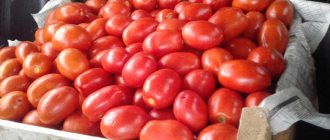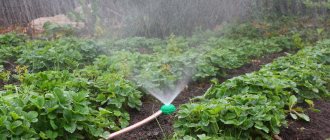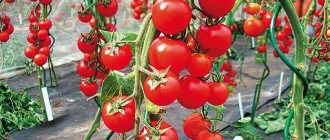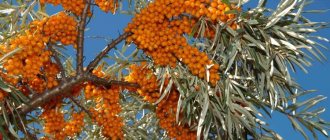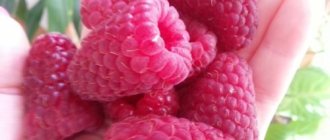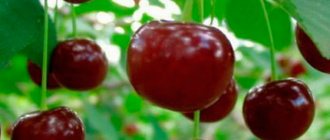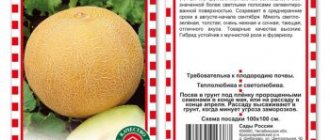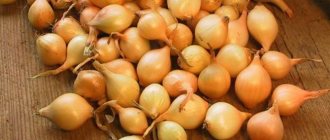What tomatoes do summer residents of the Urals grow on their favorite acres?
The moderate continental climate, in which mountain-taiga notes are felt, suggests that winters here, due to the predominance of Arctic air, are cool with severe frosts in the west and relatively mild and snowy in the east, and summers are hot and dry.
For this reason, on their dacha acres, residents of Chelyabinsk, Orenburg and Bashkiria cultivate only the most resistant tomatoes, which are unpretentious and tolerate cold weather painlessly and rarely suffer from late blight.
Large-fruited varieties of greenhouse tomatoes are very popular
How do the characteristics of vegetable crops manifest themselves in the unstable climate of the Urals?
If in the south of the Urals the climate is quite mild and the temperature regime corresponds to a moderate continental one, then in the northern regions the weather is more suitable for a sharply continental climate regime.
Spring comes late, but summer can be sunny and quite hot - up to +38 C° in the southeast, about +28 C° in the northern and western regions. Clear weather alternates with bad weather, with occasional thunderstorms and hurricane winds. The hottest month is August. Nevertheless, in the summer there is a serious contrast between the northern and southern regions of the Urals, if in the south the average air temperature is +24 C° during the day and +12 C° at night, then in the north cold snaps periodically occur, even in July at night the thermometer can show +6 + 8 C°. Prolonged heavy rains are no exception. In Udmurtia, Bashkiria and Orenburg, summers are much hotter and drier than in the Perm Territory, and in the Sverdlovsk region the summers are cooler - these facts must be taken into account when choosing seeding material.
These are rather extreme conditions for growing tomatoes, and conventional agricultural technology does not always allow gardeners to achieve success. A peculiarity of gardening among summer residents of the Urals is the use of non-traditional growing methods.
Non-standard methods of agricultural technology for cultivating tomatoes help to significantly smooth out incidents in relations with the weather; tomatoes are often grown in “warm” beds (high beds), trying not to put too much strain on the bushes so that the crop has time to ripen before the beginning of September
The short summer period and temperature changes incline summer residents to grow tomatoes under film cover. Local gardeners get a noticeable harvest thanks to the many early ripening varieties, which here begin to bear fruit from the beginning of July in open beds, and in mid-June in the greenhouse.
Grown tomato seedlings are planted in a permanent place at the end of May, when stable warming is established.
- After the first ovaries appear, the lower leaves that come into contact with the soil are carefully cut off with pruning shears.
- Pruning is carried out, especially in tall, powerful varieties.
- Late blight is prevented every two weeks. During the period of active growth, concentrated complex preparations are used, during flowering and fruiting - fungicides prepared according to folk recipes based on natural ingredients (herbal decoctions, laundry soap, brilliant green, etc.)
- Large-fruited tomatoes must be tied up.
- When hot weather sets in, many local gardeners recommend temporarily covering the shoots and fruiting bunches with a thin layer of straw, and insulating soil tomatoes with non-woven materials against unexpected cold weather.
- Mulch is a great way to maintain soil moisture and control weeds.
If you really want early ground tomatoes from your garden beds, ingenuity and non-woven material will save you
But often tomatoes grown in open ground in the Urals have to be ripened. This is done in a room with a temperature no higher than +10 C°, laying out the fruits in one layer.
Video: Record-breaking tomatoes: a selection of Ural farmers
The standard Alpatievsky (as forum users from the Urals call the Alpatiev 905 A tomato), the reliable large-fruited Yamal, and the low-growing and universal variety Gina are recognized as one of the best. Far Eastern pink, beloved by summer residents of the harsh northwestern Urals, is considered the most productive and incomparable in taste to any of the giant tomatoes. The new products of modern selection are respected here: the author's hybrid Brother F1, it will surprise with full-bodied tomatoes and a fleshy center, the Auria variety with elongated fruits, surprisingly resistant to most nightshade diseases and productive even in cool summers.
Advantages and disadvantages of Siberian selection tomatoes
Tomatoes are grown throughout almost all of Russia, even in Siberia. But experienced gardeners know how important it is to select varieties for risky farming areas. In Siberia, the growing season for tomatoes is short, late spring and early autumn frosts are possible, so growing any variety in Siberia is possible only through seedlings. Tomato seeds for open ground should be sown in March and transferred to a permanent place in May.
Leaders of the Ural beds: ground varieties of tomatoes
Siberian early ripening is a large-fruited, low-growing (up to 50 cm) tomato, known to gardeners for more than half a century, which has become popular due to its unpretentiousness and resistance to any cold weather. Maximum in the beds you can get more than half a bucket of tomatoes per square meter (up to 5.5 kg/m2), and in the greenhouse Siberian early ripening will surprise you even more - up to 10–12 kg/m2. Pinkish-orange flat-round tomatoes weigh up to 120 g and are suitable for preparing vegetable stews, adjika and other culinary delights.
Siberian early ripening can be tried 90–102 days after sowing; the determinate cultivar rarely suffers from late blight and brown spot
Surprisingly prolific and undemanding to watering and fertilizing, Tsar Peter, ripening approximately 120 days from the first sowing, allows you to harvest up to 6–8 kg/m2. On a determinate plant up to 60–70 cm high, ovoid, deep red fruits with a pointed tip appear (average weight ranges from 90–130 g) with a delicate skin already in the middle of the summer season. Tomatoes with dense, low-seeded pulp can be stored for up to 1.5 months. Late blight does not like this variety; bacteriosis also rarely affects it.
The universal Tsar Peter sets fruit excellently in cool weather; it has established itself as the best cultivar for whole-fruit canning, marinades, sauces, and tomato paste.
One of the most reliable will be the Danna variety, which appeared more than 30 years ago in the beds of Ural gardeners. A salad tomato with a yield of more than 10 kg per square meter ripens 110 days after germination (cultivated both in greenhouses and in beds). The plant is not standard, 55 cm high, belongs to the raceme tomatoes. Slightly flattened, bright scarlet tomatoes are grown for vegetable snacks and stored for the winter. Danna is resistant to bacteriosis and is not afraid of drought.
The amazing-tasting Danna tomato fruits with a sweet aftertaste average 80 g, ideal for pizza and sauces, they are stuffed and dried
Table: ground tomatoes intended for cultivation in the Ural climate
| Variety name | Ripening period | Description of fruits | Plant characteristics |
| Talalikhin 186 | early | orange-red, round, weight 130 g | determinant, 60 cm |
| Super prize F1 | early | red, flat-round, weight 113 g | determinant, 70 cm |
| Azov F1 | early | red, round, weight 150 g | indeterminate, 60 cm |
| Alpatieva 905 A | early | flat-round, red, weight 75 g | determinant, 40 cm |
| Semko 98 | mid-early | round, red, weight 90 g | determinant, 50 cm |
| Quiz | mid-early | round, red, weight 130 g | determinant, 70 cm |
| Rocket | average | plum-shaped, red, weight 58 g | determinant, 30 cm |
| Vyatich F1 | average | red, round, weight 130 g | indeterminate, 1 m |
| Banana orange | early | cylindrical, orange, weight 90 g | indeterminate, 1.2 m |
| Benito F1 | average | cuboid, red, weight 100 g | determinant, more than 80 cm |
| Blizzard | mid-early | round, red, weight 210 g | indeterminate, 50 cm |
| Liana | early | round, red, weight 80 g | indeterminate, 40 cm |
| Athena F1 | early | elliptical, orange, weight 108 g | indeterminate, 1.4 m |
| Snowman | early | flat-round, red, 120 g | determinant, more than 60 cm |
| Scarlet Dawn | early | round, red, weight 70 g | indeterminate, more than 50–60 cm |
| Countryman | early | plum-shaped, red, weight 60–80 g | indeterminate, 76 cm |
| Andryushka F1 | early | cherry, round, red, weight 20 g | indeterminate, 1–1.6 m |
| Lunar | early | cylindrical, red, weight 60–80 g | determinant, 50 cm |
| Ground Gribovsky 1180 | early | round, red, weight 50–90 g | determinant, 50 cm |
The best varieties for Siberia for greenhouses
Most gardeners in Siberia have greenhouses on their plots, most of which are dedicated to planting tomatoes.
Early
Below are the best varieties of tomatoes for growing in Siberian greenhouses with early ripening.
Wonderful lady
Early ripening hybrid - fruiting begins 95 days after emergence. The bush is medium-sized, weakly leafy. The harvest yield is friendly. The fruits have a bright red color, excellent taste and an average weight of 150...200 g. The hybrid is valued for its special resistance to unfavorable growing conditions. Gives consistently high yields even in not the most successful years.
Reviews:
Albina: “I am very grateful to my relatives for advising me to imprison the Beautiful Lady. Despite the early ripening period, the tomatoes are very tasty. They make excellent juices."
Lelya
The hybrid has a mid-early ripening period and enters the fruiting stage 100 days after emergence. The bush is semi-determinate, compact. The foliage is low and the branching is weak, so the plants bear fruit well even in conditions of lack of light. The fruits have a flat-round shape, dense flesh and a bright red color. The weight of the fetus is in the range of 100...150 g.
Tomatoes are universally used: suitable for fresh consumption and processing. The hybrid is characterized by increased resistance to unfavorable growing conditions.
Reviews:
Natasha: “Lelya tomatoes are extremely difficult to germinate compared to other varieties.”
Bulat
The hybrid belongs to the ultra-early determinants; the first harvest can be harvested within 79...85 days from the moment of seed germination. The bush does not exceed 90 cm in height and is characterized by medium foliage. Bulat fruits weigh no more than 120 g each, have a round shape, and a rich red color. The pulp is dense, juicy, of good taste.
The main advantages of the hybrid are resistance to a range of crop diseases, lack of tendency to cracking, and high yield - 15 kg/m2.
Reviews:
Liana: “Tomatoes grow very tasty even in rainy, cool summers. Damask steel has become one of my favorites; I grow it every year by seedlings, as there are concerns about return frosts after planting.”
Ground Gribovsky
An early variety of tomatoes that produces the first fruits within 95...105 days after germination. The semi-spreading bush does not exceed 60 cm in height. The yield of fruits is friendly - a third of the total harvest is harvested in the first 2 weeks from the beginning of fruiting.
Productivity in closed ground conditions is much higher than in open ground, reaching 8 kg/m2. The rounded red fruits are small in size, their weight ranges from 60...100 g. The taste and marketing qualities are good, intended for fresh consumption.
Reviews:
Alina: “The Gribovsky soil is a real godsend for gardeners who do not have the opportunity to constantly be on the site during the season. There is no need to tie him up or pin him down. The yield is stable even in short, cool summers."
The most productive
Productivity is one of the most important criteria for a gardener, which significantly influences the choice of variety for the greenhouse. In the protected soil of Siberia, you can harvest large harvests of tomatoes, the main thing is to choose the right variety.
Scarlet candles
The Scarlet Candles tomato has an average ripening period, although manufacturers often indicate this indicator as mid-early. The bush is heavily leafy and tall, with an extended fruiting period. The fruits are medium-sized – 100...130 g, elongated in shape with a sharp tip. The taste characteristics are excellent, small tomatoes have a sweet, sugary taste. The flesh is fleshy and dense. The skin is dense and smooth. Productivity – 12…15 kg/m2.
Reviews:
Lyubov: “Scarlet candles are planted in the greenhouse according to a thickened planting pattern every 25 cm. The bushes are tied with 10...11 fruit clusters, regardless of weather conditions. I use the harvest in salads and pickling."
Samokhval
Tomato Samokhval belongs to the yellow-fruited varieties of the crop. Heart-shaped tomatoes with a yellow color have a high carotene content. The weight of the fruit depends on the degree of care for the bushes: with normal care, the fruits weigh 200 g, if all the rules of agricultural technology are followed - 800 g. The pulp is yellow, sugary, and very tasty. Bushes of medium height, medium foliage, with strong branching. Productivity – at least 5 kg/bush.
Reviews:
Tatyana: “I planted Samokhval for the first time in 2015. For the last few years I have been trying to find seeds of this variety, but they are not available for retail sale. I'll have to order from collectors."
Bull forehead
The mid-early variety, bred by Siberian breeders, belongs to the indeterminate variety. During the season, not only the stems are tied up, but also the fruit branches, which can break under the weight of large tomatoes. The weight of one of them is 600 g; the first tomatoes ripen the largest. The shape of the fruit is round, the color is bright red. The pulp is very tasty, sugary with a subtle sourness, meaty. There are few seeds. Productivity – 9 kg/bush or 17…18 kg/m2.
Reviews:
Maria: “I don’t have much experience in gardening, but that didn’t stop me from growing large, tasty tomatoes in the greenhouse. Bull's forehead did not give special care to tomatoes, but the yield was high. Next year I’ll definitely plant it again and collect the seeds myself.”
Siberian surprise
A hybrid with a medium-early ripening period (100-110 days) bears fruit in small pepper-shaped tomatoes. The average fruit weight is 150 g. The color is bright red, rich. The pulp is juicy, dense, with a classic tomato taste and aroma.
The bush is indeterminate, heavily leafy, so it is thinned out as it grows. It is highly resistant to diseases and unfavorable conditions, and has a high yield of 9 kg/bush.
Reviews:
Natalya: “The recommended growing scheme for Siberian surprise is 2 stems. I grew them in 1 stem, so the fruits turned out to be somewhat larger and were no longer suitable for pickling. But the juice they made was simply excellent.”
short
Low-growing varieties and hybrids of tomatoes allow the crop to be grown in low greenhouses, and therefore are in demand among Siberian gardeners.
Budenovka
The Budenovka variety can give a head start to any new hybrid: it is highly resistant to diseases and stress under unfavorable growing conditions. It bears fruit in an average period - 110 days from the moment of germination. The fruits, in their characteristics, are very similar to Bull's Heart tomatoes - also heart-shaped, pink, large. The weight of one of them is 300...800 g. The skin is thin, but dense.
Tomatoes of the Budenovka variety are perfectly stored and transported. The bush is determinate, about 120 cm high, with few leaves. The rhizome is powerful, the stem is thin, so it needs to be tied up. Productivity – 7 kg/bush.
Reviews:
Tatyana: “In the 2022 season, I grew pink and red Budenovka. The pink one was larger-fruited, but the number of fruits was smaller compared to the red variety. Both varieties took a long time to bear fruit, so they had to be removed and stored for ripening. Keeping quality is excellent"
The Velvet season
The bushes of the variety are determinate, do not exceed 70 cm in height. The fruits are round, slightly elongated downwards. The taste is very sweet, sugary. The flesh is fleshy and dense. The skin is dense and protects the fruit from cracking. The purpose of the fruits is universal: they are used for pickling and salads; juice is not obtained from them. The average fruit weight is 100 g, however, tomatoes weighing up to 300 g are often found. The fruits are well stored.
Reviews:
Olga: “The variety showed its power already at the very early stages of development - the seedlings entered together, the seedlings grew very strong and healthy. When planted in a permanent place, there were no problems with survival. The yield of the Velvet Season bushes was also pleasantly pleasing."
Olya
The hybrid is determinate, grows in a greenhouse no more than 120 cm in height. With low growth, up to 15 fruit clusters are formed on the bush. The fruits ripen 90...105 days after emergence. The round, bright red fruits are small in size, with an average weight of 120...150 g. The pulp is fleshy and has good taste, despite the early ripening period.
The purpose is universal: the fruits are suitable for preparations and salads. The main advantages of the hybrid are high yield, resistance to stress and high immunity to many diseases and some crop pests.
Reviews:
Tatyana: “The tomatoes are small, but very tasty, the yield is amazing. There is little foliage on the bush, the shoots branch weakly, no pinching is required.”
Pink honey
Determinate bush, limited in growth to 1.5 m in greenhouse conditions. Ripening dates are mid-early. The fruits are large, fleshy, juicy, sweet. The weight of one of them is in the range of 300...600 g; by normalizing the number of ovaries, you can grow fruits weighing 1 kg. They are used fresh or for juice production. Disadvantages of the variety: average resistance to diseases and short shelf life.
Reviews:
Asel: “A super variety, they are planted annually in a polycarbonate greenhouse. It bears fruit until the cold weather, the tomatoes are very tasty."
Large-fruited
Many gardeners love to grow large salad tomatoes, which have a sugary, sweet taste.
Alsou
This variety is one of the most beloved among Siberian summer residents. The growth of the bush is limited and can reach 1...1.5 m. In greenhouse conditions, its stem is formed thin, so Alsou needs to be tied up. The first fruits ripen weighing from 600 g to 1 kg; in the upper ovaries the size becomes smaller, but still exceeds the average.
The taste of tomatoes is excellent, sweet. The pulp is juicy and sugary. The thin but dense skin reliably protects the fruit from cracking, ensures good shelf life and transportation without loss of quality. The shape of the fruit is heart-shaped. The yield is high, 7...9 kg can be harvested from one bush.
Reviews:
Valery: “An excellent variety, from which I have been collecting seeds myself for the last 2 seasons, and there is practically no difference compared to purchased material. At the end of September, the plants are affected by late blight, but the fruits are resistant to it. I think the only drawback is the presence of white veins in the pulp of some fruits, but it seems to me that the situation can be corrected with more careful care."
Abakan pink
The variety is indeterminate with an average fruiting period. The fruits are reminiscent of Bull's Heart tomatoes: bright pink, heart-shaped. The pulp is fleshy, sweet with sourness. The weight of the fruit is in the range of 200...500 g. It is distinguished by good yield and high quality of fruit.
Reviews:
Nadezhda: “Every year I grow Abakan pink in a greenhouse - the tomatoes are very large, up to 700 g, tasty, great for early summer salads. One year the bushes were affected by blossom end rot, but timely measures taken made it possible to save most of the harvest."
King of Siberia
The variety is indeterminate and begins to bear fruit in the middle period. Can be formed into 1…2 stems. The fruits are yellow-orange, heart-shaped. The flesh is fleshy and very sweet. On the lower tiers of bushes, tomatoes ripen very large - up to 600 g, on the higher ones - 300...350 g each. Productivity is average - up to 4.5 kg / bush with careful care.
Reviews:
Tatyana: “I have been growing the King of Siberia variety in a greenhouse for many years and am satisfied with the harvest even in the coldest rainy summer. The variety is unpretentious, reliable"
Grandma's secret
The bush is indeterminate and enters the fruiting phase in the middle period. Gartering and pinching are required. The fruits are large, weighing from 300 to 600 g, sometimes there are specimens weighing 1000 g. The pulp is fleshy, juicy, very sweet. The fruits can be used in salads and for making juices. The shape is flat-round. Productivity – more than 5 kg/bush.
Reviews:
Irina: “I grew bushes with 3 trunks, the fruits varied in weight: from 250 to 600. The average yield per bush was 7.1 kg (19 pieces). The fruits are very tasty with fleshy pulp."
Resistant to late blight
Late blight is a dangerous disease that occurs in the second half of summer. Many new varieties and hybrids of tomatoes are resistant to it.
Kostroma
The first fruits from indeterminate bushes of the hybrid can be collected within 103...108 days after emergence. The fruits are smooth, flat-round, colored in an intense red color.
Their size is small, on average 90...150 g. 6...9 pieces ripen in one brush. The taste is excellent - the pulp has a dessert taste. Product characteristics are high. The average yield of the hybrid is 4.5...5 kg/bush. High resistance to major crop diseases.
Reviews:
Lyudmila: “I really liked the hybrid, the taste was really dessert-like, which is quite strange, because tomato hybrids usually have a weak taste. During the season, the bushes did not get sick, even despite the fact that cladosporiosis was noticed on the site."
Kohawa
Hybrid indeterminate with early ripening. It has an extended fruiting period and produces tomatoes until late autumn. The fruits are flat-round, red-pink. The average weight of the fruit is 150 g. Its purpose is universal: it can be used fresh or for preservation. Commercial quality is high: tomatoes are well stored and transported. Resistance to late blight and other diseases is high.
Reviews:
Igor: “When growing Kokhava in a greenhouse, I got my first tomatoes within 70 days. The neighbors didn't believe it until they checked it. The bush grows large and powerful, performs well in unfavorable growing conditions - with infrequent watering, it bears fruit consistently. The yield is very high, and does not get sick during the season.”
Titanic
A determinant hybrid, its height does not exceed 60 cm. It bears fruit in the mid-early period, 110 days after germination. The tomatoes ripen evenly and have excellent commercial characteristics. They tolerate transportation well and are stored for a long time. The color of the fruit is dark red, round in shape. The average weight of the fruit is 120...140 g. Individual specimens can reach 250 g. The taste is sweet and sour, classic. Productivity is high - 5...7 kg/bush.
Reviews:
Veronica: “I planted Titanic in a greenhouse, and my friend grew it on the balcony. The result is excellent with regular feeding and ventilation."
Bersola
Early semi-determinate hybrid. The bush is compact. Fruit set is excellent. The hybrid is highly resistant to stress and disease. The fruits are round, bright red, smooth. The average weight of one of them is 160 g. Taste and commercial qualities are high. The new hybrid of Dutch selection has not yet been tested by a large number of Russian gardeners.
Cherry
Growing cherry tomatoes allows you not only to get a lot of small, tasty tomatoes suitable for fresh consumption and for use in preparations, but also to decorate your plot. Many cherry varieties are very decorative, differing in the color of the fruit and their shape.
Graph
An early indeterminate hybrid with weak foliage. Fruits weighing 40...50 g, red in color, plum-shaped. The thin, dense skin prevents cracking. High-yielding hybrid. Taste qualities are high.
Mila
The bushes are indeterminate and enter the fruiting phase early. The fruits are small, up to 15 g. Orange in color, cylindrical in shape. When fully ripe, the fruits do not fall off the branches. The pulp is orange, the taste is dessert.
Alina
The indeterminate tomato bears pink cherry tomatoes with an average weight of 20 g. The fruits are smooth, elongated, plum-shaped.
Atom
Early ripening indeterminate, producing round cherry tomatoes. The average weight of one of them is 40...50 g. The color of the tomatoes is red. The harvest yield is friendly. Increased resistance to stress.
For pickling
Homemade pickles are an invariable decoration of the festive and everyday table, which is why many gardeners grow varieties of tomatoes suitable for pickling.
Greek
The bush is tall, grows up to 180 cm. The hybrid is high-yielding and early ripening. The fruits are small, weighing 120...150 g. The shape is elongated, with a spout, the color is crimson. The pulp is very tasty and juicy. Greek grass is resistant to a complex of cultural diseases. Valued for its high taste and commercial qualities.
Margarita: “Ideal for pickling and juices”
Olesya
The Olesya variety is a yellow-fruited tomato. The bushes are indeterminate and require pinching and support. The fruits are elongated, plum-shaped, weighing 150...300 g. The pulp is sweet and fleshy. The manufacturer warns about the possibility of fruit cracking during preservation, but judging by reviews from gardeners, the information has not been confirmed in practice.
Reviews:
Galina: “I’ve been planting Olesya in a greenhouse for several seasons in a row. The yield is average, but the tomatoes are very tasty, and this fact outweighs all the disadvantages."
Koenigsberg
The bushes of the variety are indeterminate and have medium ripening periods. The fruits are red, cylindrical, weighing 150...300 g. The pulp is very tasty and sweet. The average yield is 20 kg/m2. The fruits are well stored.
Reviews:
Natalya V: “Despite the low yield this season, I really liked the variety - the fruits are tasty, very good for pickling.”
Sabelka
The Sabelka tomato bears fruit in the mid-late period, approximately 120 days after emergence. The fruits have a very unusual shape - long, elongated. The weight of one of them is 100...120 g. The pulp is dense, meaty, tasty. Used fresh and for whole-fruit canning. Productivity – up to 7 kg/m2.
Reviews:
Alexandra: “A super variety that has surpassed all previously grown long-fruited tomato varieties.”
Tomatoes in Siberia. Varieties grown in a greenhouse: video
Cultivars for indoor greenhouses
Early ripening Buran F1 is intended exclusively for forcing under film cover. On tall, indeterminate (more than 1.5 m) bushes, round, red-sided tomatoes weighing 180–230 g ripen. By design, this is one of the most productive greenhouse hybrids - up to 11–14 kg/m2 is obtained in one season, even with irregular feeding. According to experienced gardeners, the cultivar is not affected by root-knot nematodes and fusarium. The variety is universal and suitable for both processing and fresh snacks.
The Buran F1 hybrid has an excellent presentation and can be transported over long distances without loss.
Indeterminate Big Ben is not listed in the State Register, but it is often chosen by summer residents as the most reliable and productive greenhouse tomato. A variety identical to the fleshy salad tomatoes Ox Heart with loose, sour flesh, primarily suitable for the production of juice and tomato paste, borscht dressing and fillings for baked goods, gravy and hot appetizers. The tall cultivar must be secured to a support and watered more often, as it does not tolerate drought. Big Ben is not afraid of late blight and nematodes.
Big Ben, whose yield reaches 9.5 kg per square meter, will win the heart of any summer resident not only in shape, but also in taste; it shoots out stems of more than two meters, the appetizing burgundy-scarlet fruits, filled with juice, gain from 250 to 700 g
Table: productive and unpretentious tomatoes for greenhouses
| Variety name | Ripening period | Description of fruits | Plant characteristics |
| Arletta F1 | early | red, flat-round, weight 150–170 g | indeterminate, more than 1 m |
| Bersola F1 | average | flat-round, red, weight 130 g | determinant, 80 cm |
| Blues F1 | mid-early | round, red, weight 90 g | indeterminate, 60 cm |
| Kostroma F1 | mid-early | flat-round, red, weight 60–85 g | determinant, 50 cm |
| Niagara | early | pear-shaped, red, weight 110 g | indeterminate, 1.2 m |
| Macarena F1 | average | flat-round, slightly ribbed, red, weight 150–170 g | indeterminate, 1.6 m |
| Romana F1 | early | drop-shaped fruit, red, weight 80 g | indeterminate, more than 1 m |
Video: the best tomato varieties for greenhouses
Features of tomatoes for open ground?
Crops that meet certain breeding characteristics are successfully grown in Siberia. These include:
- Optimal period of fruit ripening. For hardened crops, this period should not exceed 100 days. The minimum period usually lasts up to 2.5 months. Here you need to have time for the fruits to ripen before August. If you are late with planting seedlings, the plants will begin to suffer from late blight or their leaves will begin to rot.
- Powerful bushes with a minimum number of stems. In regions where heavy rainfall and cloudy weather prevail, dense plantings should not be allowed. Insufficient ventilation will expose crops to various diseases and rotting of their individual parts.
- High endurance. This criterion is very important, since seedlings in a harsh region are planted at the beginning of summer and there is a possibility that they will be subject to frost. The temperature here can drop even in summer. When such an unfavorable period drags on, the leaves of ordinary tomato varieties begin to fall off, and specially bred crops with increased adaptive abilities survive such changes well.
- Ideterminacy. Tall types of tomatoes need timely tying up of bushes. This technique protects plants from the development of diseases. You need to take care of installing supports in advance. For this purpose, you can use a special trellis or pegs.
- Unpretentiousness to the soil. You should always choose varieties that are undemanding in terms of soil composition. The soil in Siberia is not very fertile, especially when it comes to summer cottages.
- The versatility of the fruit. Due to weather conditions, residents of Siberia are engaged in canning fruits in the summer, in a fairly short time. Therefore, you need to choose tomatoes that are suitable for both processing and consumption.
Early-ripening tomatoes for the Urals
Flash - the first to turn red in tomato beds, it is grown without worries as a ground tomato in the unpredictable climate of the Urals. Rich red with an orange tint, the 100-gram fruits are extremely tasty with a pleasant sourness. The harvest is pickled and salted, and vegetable salads are prepared for the winter. Usually, no more than 4.8 kg/m2 of tomatoes is obtained, but under favorable conditions and appropriate care, according to experienced gardeners, you can harvest twice as much. The plant is determinate, up to 60 cm high, practically does not suffer from septoria and powdery mildew and bears fruit abundantly in extreme conditions.
The peculiarity of the early ripening variety Vspyshka is round ruddy fruits with a delicate skin with brown inclusions; tomato is resistant to cracking
The hybrid Pink Miracle F1 with a ripening period of 85–100 days is chosen for forcing in a greenhouse. A determinate plant is usually formed into two stems, which sometimes reach 1.6–2.1 m. The yield is 8–10 kg/m2; in addition, the cultivar is considered invulnerable to brown spot and moisture resistant. The pinkish, crimson-blushed fruits with a dense center weigh up to 120 g, but some specimens can grow up to 450–600 g. The harvest is used in cooking, for making adjika and tomato paste.
The hybrid Pink Miracle F1 is valued for its early and uniform harvest ripening, and it is also distinguished by its excellent keeping quality and persistent immunity to fungal diseases of nightshades.
It is worth taking a closer look at the early varieties of tomatoes presented below, since these are tomatoes with a short growing season; they manage to fully produce their harvest in a short summer. The early ripening cultivars that ripen on the Ural soil 85–90 days after sowing seedlings are intended for forcing in open ground and in a greenhouse.
How to get a rich harvest of tomatoes in Siberia?
Not easy. But it's quite possible. The Siberian regions are located in continental and sharply continental climate zones. The severity of the climate manifests itself in every season. Winter here is long and frosty, spring is swift, summer is short and cool, and autumn is too early. In addition, summer weather is fickle and changeable. The key to a rich harvest is the right variety.
Before giving preference to a certain type, you should familiarize yourself with its main characteristics:
- maturation period;
- susceptibility to diseases;
- vulnerability to sudden temperature changes;
- love of light;
- productivity.
Tomatoes are representatives of heat-loving plants, so not everyone will be able to develop well and bear fruit if there is a lack of heat and light. The duration of fruit ripening is also extremely important. It should be sufficient to have time to harvest before the onset of autumn cold weather.
The largest-fruited tomatoes that have made friends with the Ural climate
The Altai masterpiece is another memorable giant, resistant to cracking and perfectly stored for up to 45 days in a fruit storage facility. The varietal feature of the determinant plant (height 1.8 m) is that it is practically not affected by diseases and pests. The mid-season variety shows the best results in greenhouses - up to 10.5 kg/m2 of selected fruits of 300–400 g each with a surprisingly delicate, sour-tasting and slightly loose pulp inherent in fleshy tomatoes, and up to 5 kg/m2 - with ground cultivation. These tomatoes are suitable for making tomato paste and gravy.
Video: tomato Altai masterpiece
Strong tomatoes are not uncommon for the beds of Ural gardeners, but Pink Honey is especially distinguished among them. To enjoy sweet, low-seeded fruits that have a characteristic tomato aroma and slight sourness, plant this variety. Heart-shaped tomatoes with pinkish-coral flesh, sugary on the break, are pickled in large containers, dried, and used as the main ingredient in fresh salads and sandwiches. The determinate bush grows from 1 to 1.5 m, it almost does not suffer from blossom end rot and cladosporiosis.
Pink honey is not the most productive - only 4.5 kg per square meter, but it tastes amazing; The average weight of a tomato varies from 200 to 650 g
Table: tomatoes with large fruits for the Urals
| Variety name | Ripening period | Description of the fruit | Plant characteristics |
| Ural F1 | average | round, red, weight 196 g | indeterminate, 0.9–1.3 m |
| Mondeal F1 | early | flat-round, red, weight 190–210 g | indeterminate, more than 1 m |
| Lord | early | heart-shaped, raspberry, weight 200 g | indeterminate, more than 1 m |
| Superbomb | average | flat-round, red, weight 150 g | indeterminate, 1.2 m |
Video: review of large-fruited tomato varieties
Low-growing tomatoes of the Urals
Early ripening Gnome is a universal determinant, the height of which does not exceed 45–50 cm. And the fruits of this variety are medium-sized—45–60 g, with a yield of about 3.5–4 kg/m2. But the cultivar is not afraid of macrosporiosis and is characterized by high fruit set. The gnome is suitable for drying and fresh snacks, and its thick skin allows you to prepare tomatoes in slices in a marinade.
The gnome is moderately susceptible to late blight and almost does not crack
Demidov is a variety of Siberian selection, does not require support or garter, but is not inferior in yield to vigorous-growing ones - more than 4-6 kg/m2. The determinate bush reaches no more than 0.6 m; by the end of July, the ground cultivar is strewn with pinkish-carmine fruits, 100–120 g each, which are especially good fresh. Fruits can be ripened, and fully ripe fruits can be stored for more than a month; tomato is not afraid of sudden cold snaps. This is a water-growing variety; without periodic watering, the yield begins to fall. It should also be remembered that with a lack of moisture, Demidov fruits are affected by blossom end rot.
A selection of Ural gardeners: the most productive cultivars
Bull's heart pink with an average ripening period is a semi-determinate tomato, which is best suited for greenhouses in the Urals; here the yield of the variety ranges from 8 to 12 kg per square meter. Heart-shaped, ruby fruits with a pinkish tint, with juicy pulp that has a slightly noticeable sourness, ripen at the end of July and usually weigh 200–350 g, but sometimes the weight of tomatoes can reach 500–750 g. Large fruits can crack, especially if they are left for too long. garden bed, so the cultivar is chosen for harvesting and preparing tomato products.
Video: tomato Bull's heart pink
Altai pink is a large-fruited tomato (weight reaches 500–600 g) and the most productive tomato in the Ural region. In covered greenhouses, the yield can reach 16 kg/m2; in garden beds, the variety brings up to 7–9 kg per square meter - this cultivar will amaze you and your loved ones. The indeterminate plant (up to 1.7–2 m in height) produces oblong light pink fruits with a tender center.
Altai pink is a giant variety, its fruits make a very tasty fresh salad, the pulp is suitable for pizza and sauces
The indeterminate Amur tiger (up to 1.8 m) will not give a chance to either cold weather or tomato viruses; it produces a lot of ovaries, even if the summer is not very sunny and warm. Fully ripened tomatoes can weigh about 240 g. The wonder tomato, which has brownish fruits with pronounced dark green stripes, will delight you with its juiciness and aroma. The cultivar is suitable for sandwiches and snacks, making juices and canned food.
The average yield of the Amur Tiger variety is 11 kg per square meter
How to select and prepare seeds before planting
To plant tomatoes in a greenhouse in the Urals, select varieties that have a set of distinctive qualities:
- Early periods of maturation. This is an important quality for the climatic conditions of the region. In some areas, early frosts are observed; gardeners and gardeners should have time to remove the fruits before they occur.
- Resistance to infection by infectious diseases. Low night temperatures often weaken crops and make them susceptible to disease, so it is necessary to choose varieties that are resistant to such conditions.
- Resistant to temperature changes. Sharp changes in weather are typical for some areas of the Trans-Urals.
Experts recommend choosing hybrid tomato varieties that were bred by breeders from the Siberian region for the harsh conditions of the Urals. They take into account the peculiarities of the climate.
Attention! High-yielding fruits, which are recommended by residents of the southern part of the country, are not suitable for growing in greenhouses in the Urals.
Seeds are obtained in two ways: independently, from a previous successful harvest, or purchased in specialized stores. Purchased seeds can be granulated, then they do not need to be processed, they are already ready for planting. Seeds collected independently or purchased in the form of grains require a special approach:
- For processing, prepare a 5% saline solution and place the seeds in it.
- The grains that float to the surface are removed. They are unusable.
- The remaining seeds are dried.
- Then they are placed in a growth stimulator, after which they are sown.
Small-fruited tomatoes suitable for the Ural region
Black cherry is a salad variety with amazing brown-purple fruits, it bears fruit well - from 3 to 7 kg/m2, it can be planted in open ground or in a greenhouse. The bush is indeterminate, reaches 2 meters, despite the small-fruited cultivar, the clusters number up to 25 fruits and weigh 200–450 g, so the plant must be tied up. The average weight of juicy, aromatic cherry tomatoes is about 15–20 g; they are suitable for fresh snacks, decorating side dishes and canning.
The vigorous-growing variety Black Cherry is not afraid of cold weather, so in the unstable Ural climate it is accepted as “one of our own,” although it was originally bred for the central regions of our country
Low-growing, early-ripening Duckling with yellow, appetizing fruits is suitable for summer snacks. Round lemon-orange tomatoes with a sharp nose gain an average of 25–55 g. This tomato provides great variety in garden beds and is suitable for baby food. This cultivar has good immunity, a yield of about 3 kg/m2 and high shelf life of the fruit.
The Utenok variety has quite a lot of ovaries even in bad weather, and the taste is not inferior to ordinary large-fruited varieties with red flesh
Sweet cherry is a universal variety of small-fruited cherry tomatoes, resistant to bad weather and viral diseases of tomatoes. The maximum weight of pinkish-lingonberry pea-tomatoes is about 15–20 g. Fruiting from a bush (height 1.4 m) reaches 2.5 kg; from one square meter you can achieve up to 8 kg of excellent bunch tomatoes. The variety is suitable for baking and sauces, and Sweet cherry is also pickled for the winter and added to summer snacks. Neither children nor adults will refuse small but very sweet tomatoes.
Video: Sweet cherry tomato
The State Register of Breeding Achievements offers more than a hundred high-yielding tomatoes adapted to the unstable climatic conditions of the Urals. Local breeders also have a large selection of hybrids for fresh consumption and pickling. By choosing zoned varieties, at the end of the summer season you will definitely be able to boast of an excellent harvest of sweet, juicy tomatoes from your garden.
- Author: Ksenia Bogacheva
Greetings to all! I love my garden and my pets very much. Always happy to share knowledge and experience. My motto: if you can’t change the situation, change your attitude towards it. Rate this article:
- 5
- 4
- 3
- 2
- 1
(24 votes, average: 4 out of 5)
Share with your friends!

